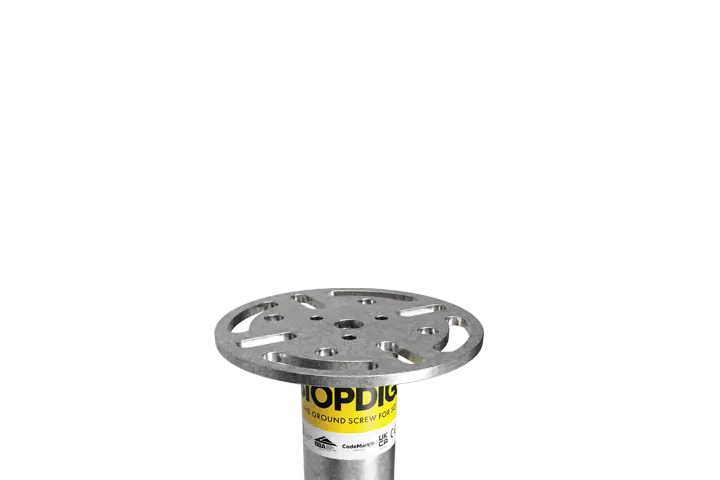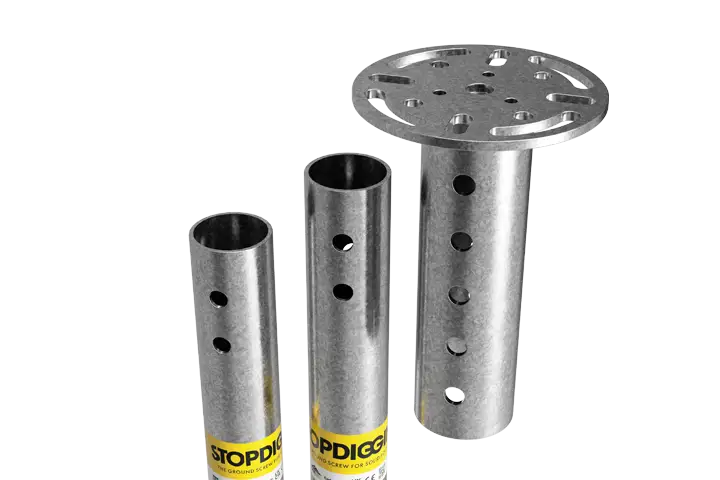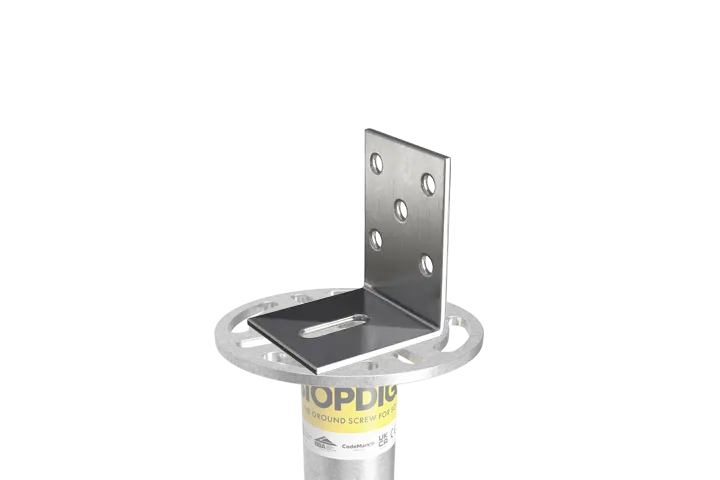Designed for strength, speed, and sustainability
Sustainable, robust foundations for homes
Ground screws for low-rise construction: Built to meet tomorrow’s demands
Traditional house piling methods, using materials like concrete, steel, or wood, often involve heavy machinery, loud noise, and significant environmental impact. StopDigging’s ground screw foundations provide a great alternative to traditional methods, delivering stability, sustainability, and efficiency. Our solution includes the entire foundation process—from precise calculations to installing a fully finished foundation. Our products are engineered for precision and can be used in unstable soils or challenging terrain, all while reducing carbon footprints and preserving ecosystems.
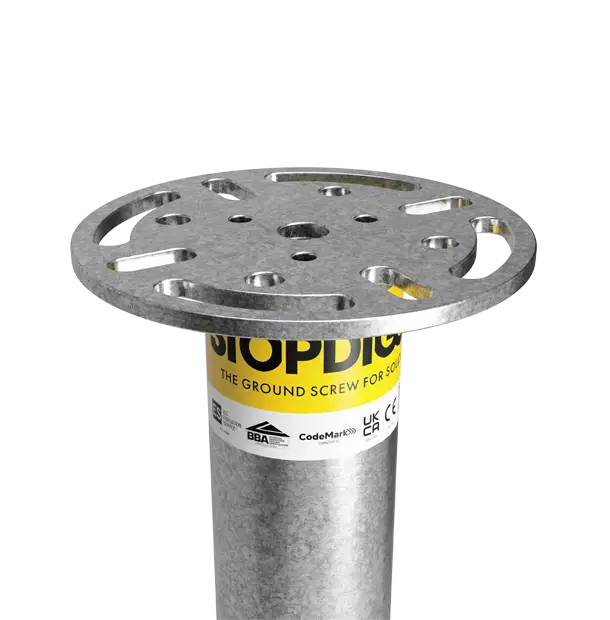
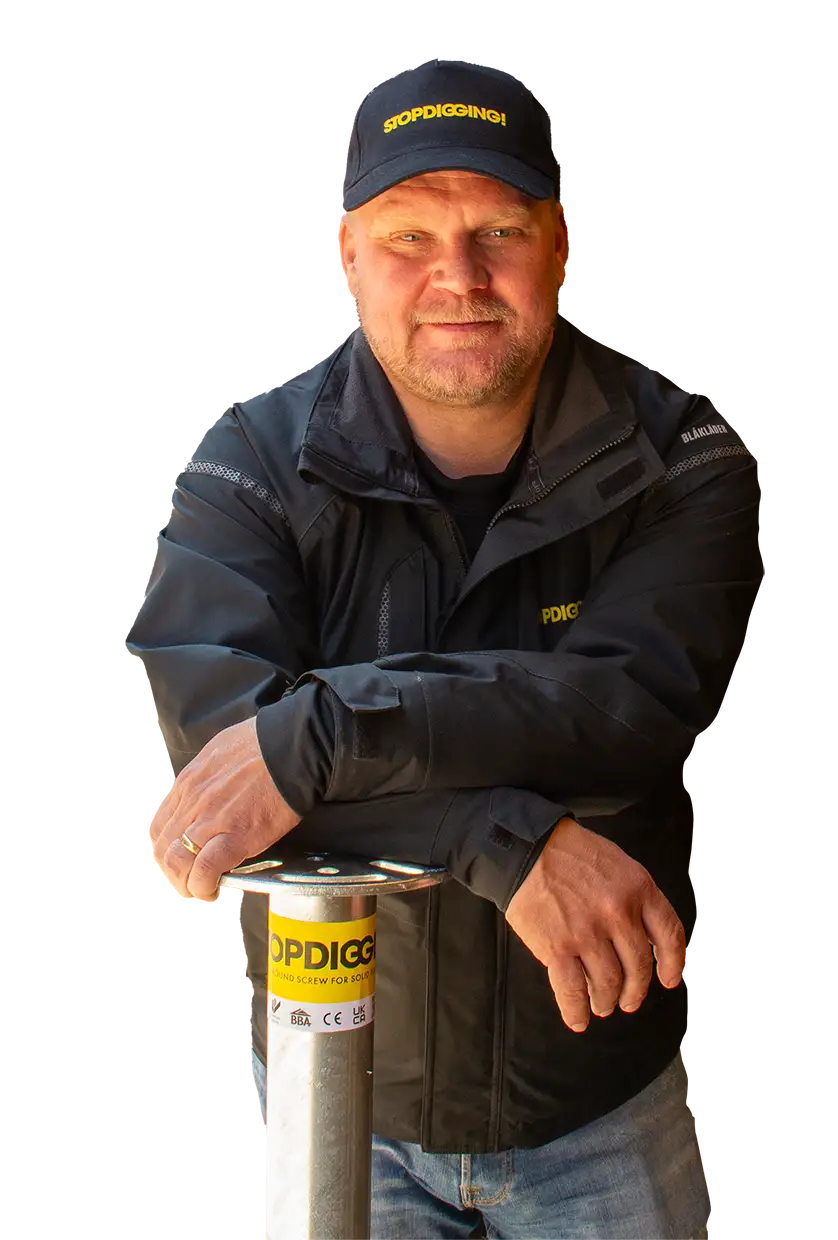
StopDigging’s commitment to quality and sustainability – Backed by ISO Certification
At StopDigging, we are committed to the highest standards of quality, sustainability, and efficiency in everything we do. Our ISO certifications are a testament to this dedication, ensuring that our products, processes, and services consistently meet international standards.
Our ISO Certifications
| Material | EN 10027-1:2016: S235 JR |
| Product CE | EN 1090 |
| Galvanization | ISO 1461:2009 |
| Manufacturing process | EN 1090 / ISO 9001:2015 |
| Installation process | ISO 9001:2015 |
Customised ground screw solution for traditional piling needs
Every project is unique – which is why we offer tailored ground screw solutions that adapt to various soil conditions and load requirements. By anchoring ground screws deeply into stable soil layers, the need for extensive excavation and heavy equipment eliminates. The installation process gets sped up and reduces on-site disruption, making it ideal for urban and environmentally sensitive areas. These are the products we use:
Heavy-duty ground screws
Our range of ground screws—including the SGC and SGX—are designed for specific needs. Each screw is crafted from high-quality hot-dip galvanized steel, offering exceptional durability and resistance to corrosion.
Adapter for house piling
Some projects require more stability than others, which is why we can combine the screws with special adapters for an optimal result.
Steel bracing system
Using diagonal braces will greatly increase the strength of the combined foundation. We have a supply of standardised 48mm high-quality steel tubes. Combined with specially adapted swivel clamps, the foundation can withstand large lateral loads. The steel bracing system supports elevated subfloor levels, making it ideal for sloping sites or areas with expansive soils.
Swedish precision
and environmental
Responsibility
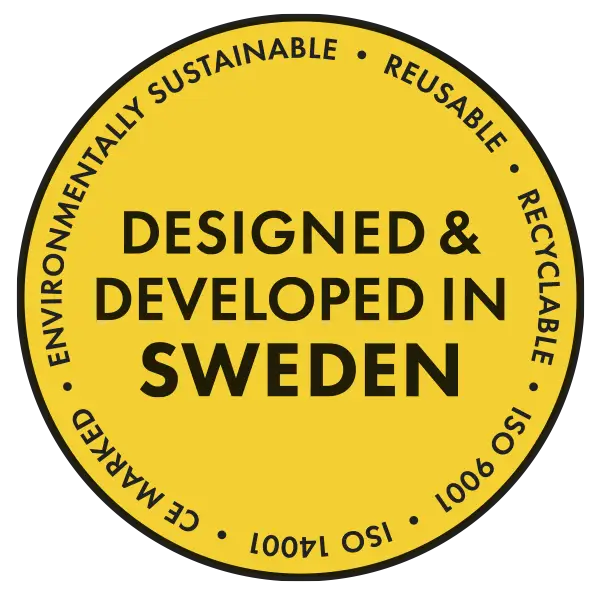
Designed and developed in Sweden
All of our ground screws are designed and developed in Sweden, embodying Swedish precision and upholding the highest standards of quality, durability, and environmental responsibility. This commitment ensures reliable performance in a wide range of environments. By selecting these specialised ground screws, we guarantee that each foundation our professional partners build is not only structurally sound but also seamlessly integrated into its natural surroundings.
Why use ground screws over traditional house piling
Traditional house piling methods—using concrete, steel, or timber piles, driven or bored into the ground—have long provided stable foundations in challenging soil conditions. However, these methods often require extensive machinery, causing ground disturbance, noise, and carbon emissions. Here’s why you should choose ground screws instead.
Efficiency and speed
Traditional methods, like using concrete piles, need excavation, curing, and specialised machinery, which can extend timelines significantly. Ground screws, on the other hand, can be installed in hours without the need for curing or excavation. They require minimal labour and light equipment, making them ideal for tight timelines or hard-to-access sites.
Cost-effectiveness
Ground screws are cost-effective, needing fewer resources and smaller crews. Their compact design lowers transport and storage costs, saving money at each project stage. In contrast, traditional piles like concrete and steel have high material, labour, and logistical costs. While cheaper initially, timber piles need more durability and require more maintenance. Ground screws reduce overall costs without compromising on stability or strength.
Sustainability
Made from recyclable materials and causing minimal ground disturbance, our screws align with eco-friendly construction practices. Their vibration-free installation avoids noise and ground disturbance, preserving ecosystems and soil integrity. In contrast, traditional methods like concrete and steel piles are energy-intensive and produce significant CO₂ emissions.
Case study
Ground screw foundations ensure sustainability and efficiency in the 20-home Papakāinga Project
Background
One of New Zealand’s largest Papakāinga projects
Located in Motueka, New Zealand, Te Āwhina Marae papakāinga is a community-led housing initiative designed to provide affordable homes for Māori families, also known as whānau. The development includes 20 homes with various bedroom configurations (two, three, or four bedrooms) and a central community house, or whare. This ambitious project, supported by Te Puni Kōkiri, the Ministry for Māori Development, has been planned for over 15 years and is one of New Zealand’s largest papakāinga projects.
Maintaining environmental resources
Motueka, situated in the Tasman region on New Zealand’s South Island, is known for its fertile land and proximity to the coast. Environmental preservation is crucial here due to the region’s cultural and ecological significance. As part of the local Māori heritage, land and water hold deep cultural meaning, and maintaining these resources is a priority. Selecting sustainable materials and construction techniques was essential for minimising the ecological impact on this sensitive land.
Objectives
A foundation solution aligned with cultural values
The project aimed to create a foundation solution that aligned with cultural values, minimised environmental impact, and provided safe, quality housing for the community, supporting the overall goal of “living lightly” on the land.
The challenge
Avoiding the use of treated timber
Scott Construction, the project’s contractor, needed a foundation system that minimised ground disturbance and avoided using treated timber, which could introduce chemicals into the soil. Due to the cultural and environmental values held by the local community, preserving the integrity of the land and water resources was essential. Traditional foundation methods risked chemical leaching and significant soil disruption, posing challenges to the project’s sustainability and cultural objectives.
Traditional piling methods were unsuitable for this project due to the environmental risk of leaching from treated timber and the heavy ground disturbance they entail. These issues could have compromised the area’s ecological balance, affecting the community’s connection to the land and ultimately clashing with their cultural and sustainability goals.
The solution
Providing a low-impact, waste-free foundation solution
Scott Construction selected StopDigging’s CodeMark-certified Ground Screw Foundation System, known for its low carbon footprint and eco-friendly design. The ground screw foundation was chosen for its sustainability advantages, such as reduced ground disturbance, zero waste, and the ability to be reused.
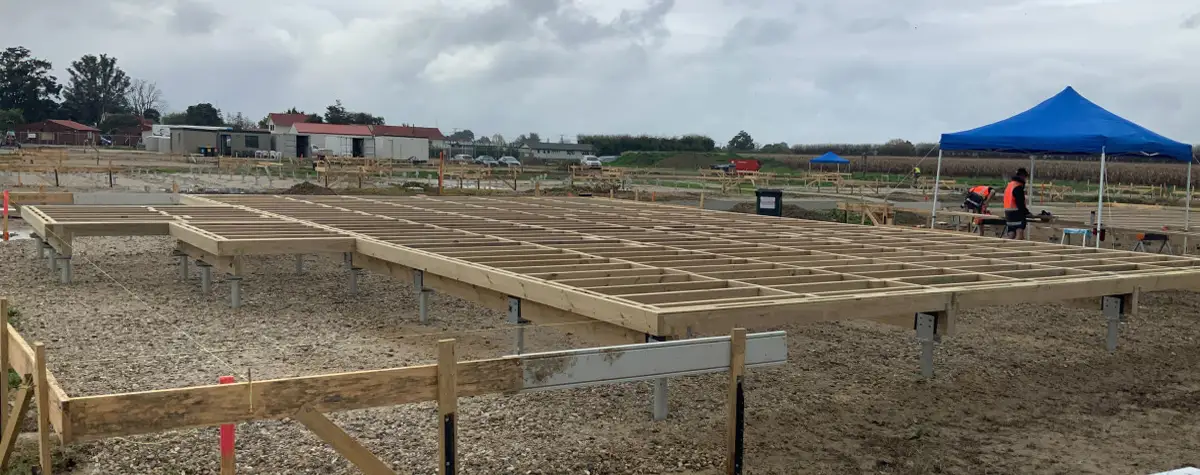
Over 850 ground screws for the homes and 400 for decks.
The StopDigging team conducted on-site load testing to select the best ground screw types for the project’s engineering needs and later managed the installation of over 850 ground screws for the homes, with an additional 400 screws for decks—this approach minimised site disruption and allowed for rapid installation.
The results
House foundations completed in just seven days
The installation of the ground crews was completed in just 7 days across 21 buildings, despite challenging rainy conditions, reducing construction time and avoiding the site disruptions typical of traditional methods.

Zero chemical leaching, lower emissions, and minimal soil disturbance
Using ground screws contributed to a cleaner, more environmentally friendly site with zero chemical leaching, lower emissions, and minimal soil disturbance, maintaining the pristine environment essential to the community’s values.
Client feedback
Scott Construction was impressed with the speed of the ground screw foundation, its low environmental impact, and the benefits of a tidy, organised work site.
“The project went seamlessly, and we saw immediate benefits from this system,”
said Brook Johnston, Scott Construction. The team has since adopted ground screws for other projects, valuing their efficiency and environmental benefits.
Conclusion
Ground screws advantages over traditional foundations
StopDigging’s Ground Screw Foundation System provided an ideal foundation solution that met the community’s cultural and environmental priorities. The quick and clean installation demonstrated the system’s advantages over traditional foundations while helping the project stay true to its goal of living harmoniously with the land.

Get in touch
Are you interested in a quote for your project with our ground screw solutions? Or would you like to work with us? Contact us here for quotes, partnership inquiries, and other questions about your project. We are here to help!
Commitment
to sustainable
foundations
Our solutions are designed with the environment in mind, minimising impact while maximising efficiency. By using ground screws and sustainable materials, we reduce soil disturbance, lower emissions, and adapt seamlessly to various terrains—including challenging sites like steep slopes and remote areas. This approach supports clean installations that respect and protect natural ecosystems, aligning with our commitment to sustainable development.
